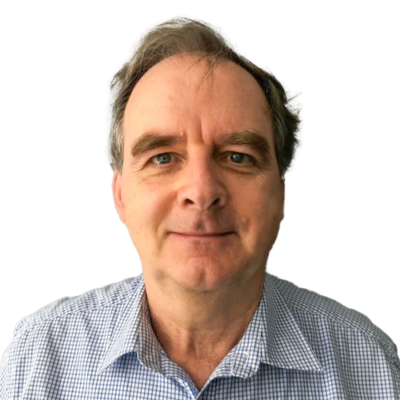No, we are not outraged that our six former prime ministers suckle on the taxpayer teat. A few of them did some good after all. Pandemic or no pandemic, the six managed to rustle up a million dollars in expenses this year alone, report Stephanie Tran and Mark Sawyer.
Australia does a good job of looking after its former prime ministers.
We have come a long way from 1966, when Robert Menzies left The Lodge after 16 years. Australia’s longest-serving PM did not have another home to go to, and no claim on taxpayers’ generosity. So Melbourne establishment figures got him new digs in the city’s respectable eastern suburbs. In an era of scandal-shy press, nobody made much of a fuss about it.
Today, former PMs’ pensions are generous enough to afford a nice little place, though not as generous as they were, thanks to a vigorous handshake deal between John Howard and Mark Latham in 2004. The changes brokered by the Coalition and Labor limited eligibility to what was then a bottomless pit of perks for all MPs, not just PMs.
Now, only former PMs elected to Parliament before the 2004 election are entitled to the big perks that were available under the Parliamentary Contributory Superannuation Scheme (PCSS). That cuts out Malcolm Turnbull and the incumbent, Scott Morrison, but not Paul Keating, John Howard, Kevin Rudd, Julia Gillard and Tony Abbott.
On top of their pensions, in the first nine months of 2021 our six living ex-prime ministers cost taxpayers $1,086,531.
The ghosts who waltz
Turnbull is, overall, one of our least expensive ex-PMs, if not the least expensive. But his itemised expenditure from January to September 2021 came in at $274,386.79, leading the pack of ex-PMs.
Turnbull may have memorably coined the term miserable ghost for Rudd and Abbott, but he and his superannuated colleagues in the Ex-Prime Ministers Club are no misers.
Michael West Media (MWM) has pored over the figures released by the Independent Parliamentary Expenses Authority (IPEA) on December 14.
Howard spent $256,377.74. Abbott spent $229,645.08. Keating spent $119,502.25. Rudd spent $116,506.77 and Gillard spent just $86,077.75. The same order was maintained in their office expenses, detailed below.
Despite the pandemic, their spending did not go down in 2020-21 from 2019-20.
MWM has prepared tables outlining the spending by former PMs in almost the entire period since Morrison replaced Turnbull in August 2018. The tables do not repeat the figures detailed above, which were based on nine months only, not the full year of 2021. Instead we have detailed three full years ending on September 30, 2021.
Bob Hawke, who died in May 2019, is not included on the tables. He totted up expenses of $92,717 in 2018-19 and $60 (yes, sixty dollars) in 2019-20.
The dullness is in the details. The overwhelming bulk of spending comes from running an office, and the lists regale us with an eye-glazing detail on ”office consumables and services”. Photocopier toner could have filled Lake Burley Griffin. And a couple of the six even ran a fax machine, god love ’em.
There is car running costs. For some, there is still flights.
The most colour and movement is provided by Abbott, the only modern PM (barring comeback kid Rudd) to hang around Parliament after losing the prime ministership. Abbott was still an MP when he made a welter of trips between October and December 2018, the figures reveal. Sydney-Darwin. Darwin-Sydney, Sydney-Canberra. Canberra-Brisbane. Brisbane-Sydney. Sydney-Adelaide. Adelaide-Sydney. Sydney-Perth. Perth-Broome. Broome-Kununurra. Kununurra-Perth. Perth-Sydney. Sydney-Cairns. Brisbane-Sydney (not sure how he got out of Cairns). Sydney-Canberra. Canberra-Sydney.
The following table reveals the spending by the ex-PMs’ offices. But not the locations – that is not divulged. It will be noticed that two PMs’ spending accelerated over the three years, while four of the offices more or less held the line.
Retirement? What retirement?
We can’t quibble with the record-keeping. Nor do we begrudge our former PMs a dignified retirement. The question is: what is a PM’s retirement these days? This may be the most hyperactive crop of exes in Australia’s history.
At 82, Howard should be striding around in one of his tracksuits, as he did as PM (the green and gold was fetching). But he is more likely to be sighted in a suit and tie, surrounded by acolytes, consolidating his status as Liberal leaders’ confidant, adviser, and the party’s first real icon since Menzies.
Turnbull and Rudd have been active in seeking a royal commission into the control and conduct of the media, with special attention for Rupert Murdoch. Turnbull, the figures reveal, keeps a close eye on his quarry via subscriptions to The Weekend Australian and The Herald-Sun. (Howard’s reading tastes include The Economist, Quadrant and The Spectator Australia, along with Nine and News titles.)
In November Keating made his first foray to the National Press Club since leaving office. He is a diligent defender of his place in history, especially vis a vis his contribution to the success of Bob Hawke’s prime ministership. Abbott has accepted appointment as a trade adviser to the British government, addressed meetings of climate sceptics, and courted the conservative media.
Gillard chairs the mental health support service beyondblue. Perhaps more assured of her place in the history books than the men on either side of her, she has been the least vociferous and one of the least miserable of the ”ghosts”.
Get used to it
The number of Australia’s living ex-prime ministers – six – is about par for the historical average. But they hang around a lot longer than most of their predecessors.
Going by the last five, it’s fair to bank on about 30 to 35 years for the modern PM, in keeping with our postwar longer lifespans. McMahon, the oldest man to arrive at the prime ministership, lasted only 16 years after leaving the office but Whitlam put in 39, Gorton 34, Fraser 32 and Hawke 28.
Our current six have a fair way to run yet (and we wouldn’t have it any other way). One last thought:
Let us show our love
It has long been a fantasy of political junkies that each PM bestows upon the grateful nation their own library, as US presidents have done since 1941. Full of relics, documents, interactive displays and even atmosphere, these libraries are tourist attractions and conference centres.
Shorn of the Yank-style hoopla, such equivalents here are mainly housed in universities and focused on scholarship. The Whitlam Institute operates from within the University of Western Sydney. The Howard Library is run by the University of NSW Canberra and operates out of Old Parliament House.
Bob Hawke’s prime ministerial papers and other memorabilia are at the National Archives in Canberra while material from before and after his term is at the University of South Australia. The paintings, golf clubs, Eskys, booze, cigars, ashtrays and other knick-knacks that helped illuminate Hawkie’s ”lifelong love affair with the Australian people” were auctioned shortly after his death, going straight into many a pool room across the nation.
The nation should have snapped it all up. Time, perhaps, to consider throwing some real money into celebrating and critiquing the achievements and failures of some of our most important historical figures.
Treasurer Measurer: exploding the Liberal election myth of superior economic managers


